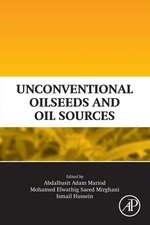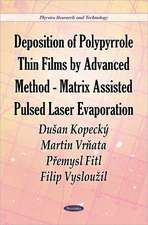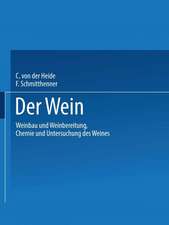Wild Fruits: Composition, Nutritional Value and Products
Editat de Abdalbasit Adam Marioden Limba Engleză Hardback – 19 dec 2019
To date there has not been a reference work focusing on the full scope of wild fruits from their growth and chemical makeup to their harvest, distribution, health effects and beyond. Wild Fruits: Composition, Nutritional Value and Products adequately fills this gap, expansively covering the utilization of multi-purpose wild fruits in regions worldwide. Effects on quality of life, food security, economics and health are extensively covered. Over 31 wild fruit species are examined, with individual chapters focusing on each species' phytochemical constituents, bioactive compounds, traditional and medicinal uses and chemical composition. Harvest, post-harvest and consumption methods are covered for each, as are their overall effect on the food security and economics of their native regions.
This book is essential for researchers in search of a comprehensive singular source for the chemical makeups and cultivation of indigenous wild fruits and their many benefits to their native regions.
| Toate formatele și edițiile | Preț | Express |
|---|---|---|
| Paperback (1) | 740.57 lei 6-8 săpt. | |
| Springer International Publishing – 19 ian 2021 | 740.57 lei 6-8 săpt. | |
| Hardback (1) | 1128.08 lei 6-8 săpt. | |
| Springer International Publishing – 19 dec 2019 | 1128.08 lei 6-8 săpt. |
Preț: 1128.08 lei
Preț vechi: 1375.71 lei
-18% Nou
Puncte Express: 1692
Preț estimativ în valută:
215.85€ • 225.37$ • 178.65£
215.85€ • 225.37$ • 178.65£
Carte tipărită la comandă
Livrare economică 05-19 aprilie
Preluare comenzi: 021 569.72.76
Specificații
ISBN-13: 9783030318840
ISBN-10: 3030318842
Pagini: 577
Ilustrații: XII, 577 p. 125 illus., 110 illus. in color.
Dimensiuni: 155 x 235 mm
Greutate: 1 kg
Ediția:1st ed. 2019
Editura: Springer International Publishing
Colecția Springer
Locul publicării:Cham, Switzerland
ISBN-10: 3030318842
Pagini: 577
Ilustrații: XII, 577 p. 125 illus., 110 illus. in color.
Dimensiuni: 155 x 235 mm
Greutate: 1 kg
Ediția:1st ed. 2019
Editura: Springer International Publishing
Colecția Springer
Locul publicării:Cham, Switzerland
Cuprins
The role of wild fruits in mitigating hunger.- Wild fruits and sustainable rural development.- Wild fruits and its implications on food security and poverty alleviation in Sudan.- Prospects for utilization of wild food.- Economic of wild fruits in Sudan.- Domestication of indigenous fruit trees.- Contribution of wild edible fruits to rural peoples economy.- The impact of wild fruits to a better life worldwide.- Utilization of multi purpose wild fruits within the gum belt –Sudan.- Wild fruits medicinal use and health benefits.- Adansonia digitata phytochemical constituents, bioactive compounds, traditional and medicinal uses.- Annona squamosa phytochemical constituents, bioactive compounds, traditional and medicinal uses.- Vangueria madagascariensis phytochemical constituents, bioactive compounds, traditional and medicinal uses.- Grewia tenax (Guddaim) phytochemical constituents, bioactive compounds, traditionaland medicinal uses.- Ziziphus spina-christi: Analysis of bioactivities and chemical composition.- Balanites aegyptiaca phytochemical constituents, bioactive compounds, traditional and medicinal uses.- Detarium microcarpum bioactivities and chemical composition.- Sclerocarya birrea bioactivities and chemical composition.- Tamarindus indica bioactivities and chemical composition.- Dacryodes edulis composition and physico-chemical properties.- Irvingia gabonensis nutritional properties.- Parkia biglobosa.- Garcinia Kola (Bitter Kola) chemical composition.- Ricinodendron heudelotii (Njangsa) Chemical Characterization.- Artocarpus heterophyllus (Jackfruit): An Overview.- Nopal cactus (Opuntia ficus-indica) as a Source of Bioactive Compounds.- Antidesma montanum or Antidesma angustifolium biochemistry and bioactive compounds.- Calamus manillensis Phytochemical Screening and Antioxidant Activity.- Debregeasia longifolia biochemistry, functions, utilization., Azanza garckeana L. distribution, composition, nutritive value, utilization.- Grewia Species: Diversity, distribution, traditional knowledge and utilization.- Hyphaene thebaica Doum distribution, composition, & utilization.- Nauclea latifolia (karmadoda) distribution, composition, & utilization.- Physalis peruviana the functional multiple properties.- Borassus flabellifer L Palmyra palm (Daleeb). biochemistry, functions, utilization.- Ceratonia siliqua (carob) biochemistry, functions, utilization.- Garcinia binucao, biochemistry, functions, utilization.- Elaeagnus triflora biochemistry, functions, utilization., Vaccinium myrtoides biochemistry, functions, utilization.- Flacourtia rukam biochemistry, functions, utilization.- Muntingia calabura: A review on its traditional uses, chemical properties.
Notă biografică
Abdalbasit Adam Mariod (Ed.) is a Professor in the Indigenous Knowledge and Heritage Center at Ghibaish College of Science & Technology in Ghibaish, Sudan
Textul de pe ultima copertă
Wild fruits play an important role in mitigating hunger in the developing world. As a sustainable and natural food source in rural areas, these fruits have a strong effect on regional food security and poverty alleviation. This makes the utilization of wild foods incredibly important for native populations both in terms of food security and economics. There are many traditional methods for wild fruit harvesting, indigenous tree and plant domestication and cultivation passed down through generations that are sustainable and economically viable, ultimately contributing to a better quality of life for large sections of the developing world.
To date there has not been a reference work focusing on the full scope of wild fruits from their growth and chemical makeup to their harvest, distribution, health effects and beyond. Wild Fruits: Composition, Nutritional Value and Products adequately fills this gap, expansively covering the utilization of multi-purpose wild fruits in regions worldwide. Effects on quality of life, food security, economics and health are extensively covered. Over 31 wild fruit species are examined, with individual chapters focusing on each species' phytochemical constituents, bioactive compounds, traditional and medicinal uses and chemical composition. Harvest, post-harvest and consumption methods are covered for each, as are their overall effect on the food security and economics of their native regions.
This book is essential for researchers in search of a comprehensive singular source for the chemical makeups and cultivation of indigenous wild fruits and their many benefits to their native regions.
Caracteristici
Extensively covers wild fruits from their growth and chemical makeup to their harvest, distribution, health effects and beyond Focuses on wild fruits' effects on the quality of life, food security, economics and health of native populations worldwide Outlines the phytochemical constituents, bioactive compounds, traditional and medicinal uses and chemical composition of over 50 indigenous wild fruits
























